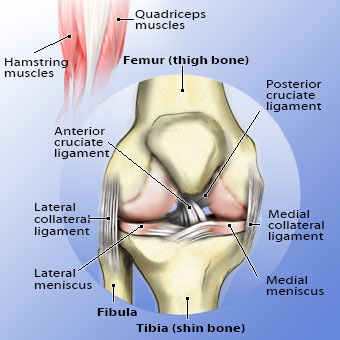
The knee joint is a two sided bone that connects the femur to the tibia and patella in the hip socket. It has four bones that make up the entire knee joint: the femur, the tibia, the shinbone, and the kneecap.
The ends of both the tibia and fibula, and also the outer edge of the patella are covered by articular cartilages. This sticky material helps the knee bones glide together smoothly as you bend forward or straighten your knee. When this cartilage gets inflamed, the joint becomes rigid and can’t support your weight.
Over time, wear and tear of the knees may contribute to the development of osteoarthritis. Osteoarthritis occurs when the cartilage wears out causing your kneecap and the knee joint to become worn out, eventually causing pain. You may experience knee pain when you exercise or stand for a long period of time.
Arthritis typically happens due to repetitive injury. If you have recently injured your kneecap, it is important to see your doctor immediately so he can diagnose you with arthritis. Arthritis is more common in women than men.
Most of the time, arthritis does not require treatment and simply needs to be treated with physical therapy. Physical therapy will help you strengthen your muscles, bones, ligaments, tendons, and tendinitis. When your joints become weak because they have become worn out due to too much activity and lack of exercise, then your doctor may prescribe medication. Anti-inflammatory drugs will help with pain relief, but may not provide relief from arthritis.
In more serious cases, surgery may be required to replace the damaged joints. Sometimes, a bone that becomes pinched between the femoral bones and the tibia may need to be removed. In these cases, you might also have to undergo surgery for a dislocated knee.

Arthritis is very treatable, especially if it is caught early on. A combination of exercise and therapy is the best approach to help you deal with osteoarthritis. If you start treating the cause of your arthritis early, the chance of your joint becoming stiff and tight again is very low.
Knee braces offer a better way to stabilize your bones as your body tries to support your knee joints. This type of support keeps your bones in place so they don’t move around. As your bones get stronger, your knee becomes less prone to injuries and pain.
Knee braces are available in several forms. They range from simple support straps that you wear while standing to custom knee supports made of titanium and ceramic. When your surgeon puts you through a training course to determine which kind of knee support will work best for you, he will be able to choose the right one for you.
A support strap is worn by you while you’re at home doing your daily chores. Your doctor will usually give you instructions on how to wear your support strap. If you do not like wearing them, you can purchase one for your house. or car and put it on after you’re done using them.
Custom supports are made of a variety of materials and are also available over the internet. If you’re suffering from osteoarthritis and do not want to wear a support strap, you can still wear the support strap while watching TV or reading books on the computer. A custom support strap may look like an ordinary belt. It’s similar to a regular support belt and you can purchase these.
Many people choose to wear custom supports for their shoes. The support strap keeps your feet on the floor as you walk and prevents them from slipping down. You can choose a wide or narrow support strap to ensure that the straps don’t fall off. If you can’t wear your shoes at home, you can also order a wide or narrow strap for your car to protect your knees.
Knee pain can be a nuisance, especially if it persists despite your best efforts. If your pain worsens, consult with your doctor to determine if surgery is necessary.
About the author